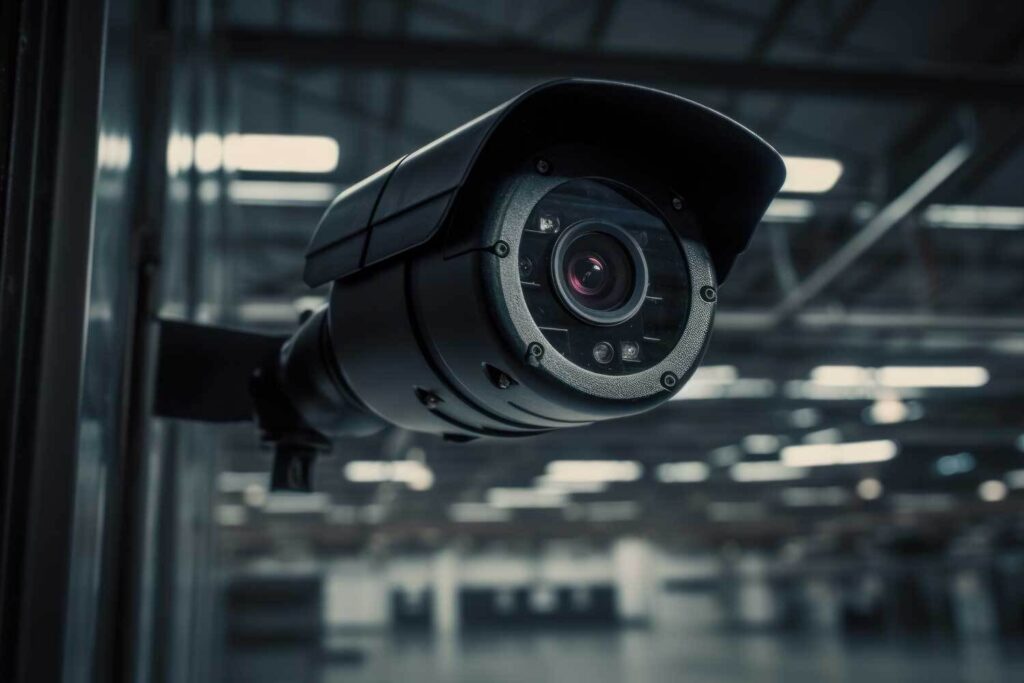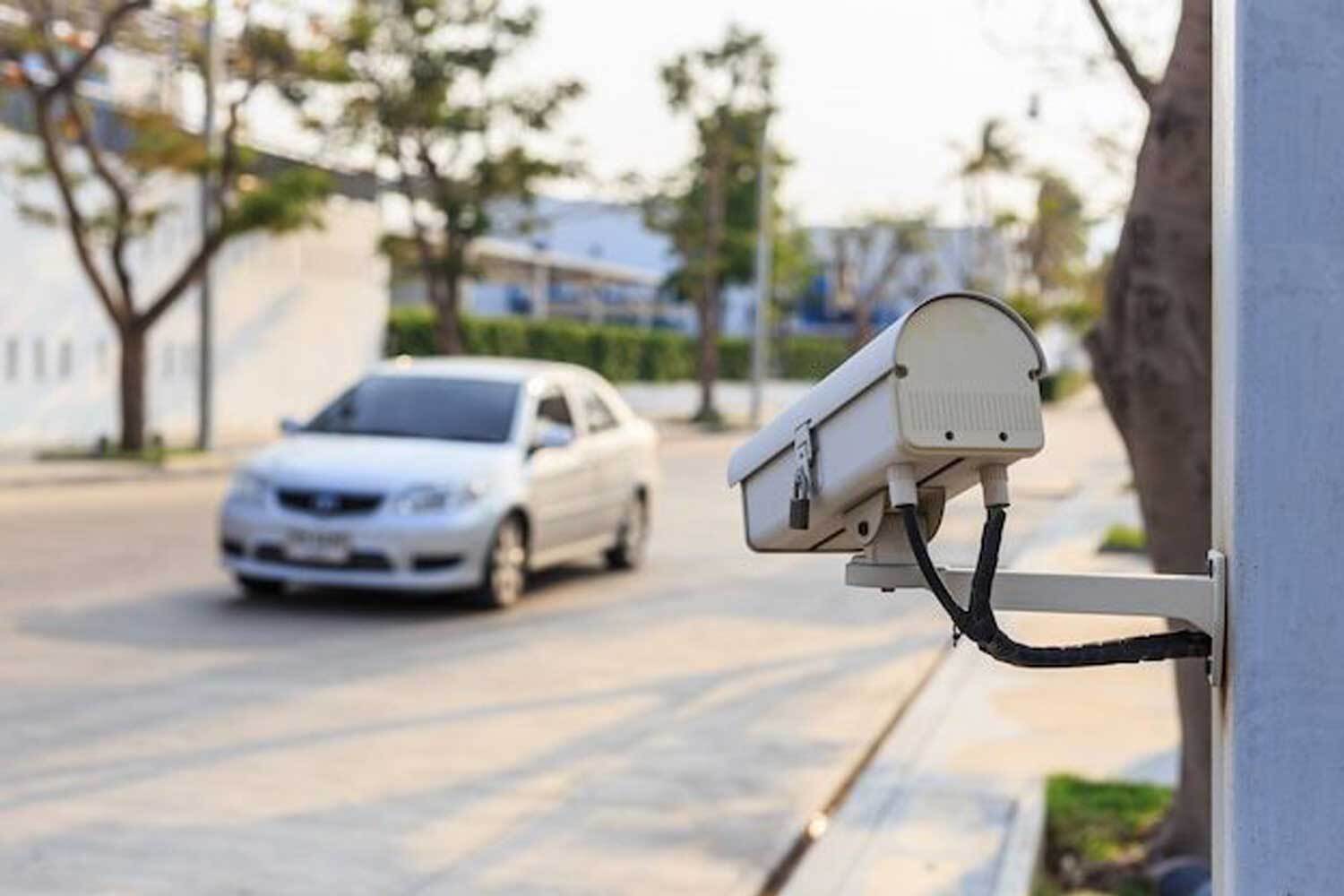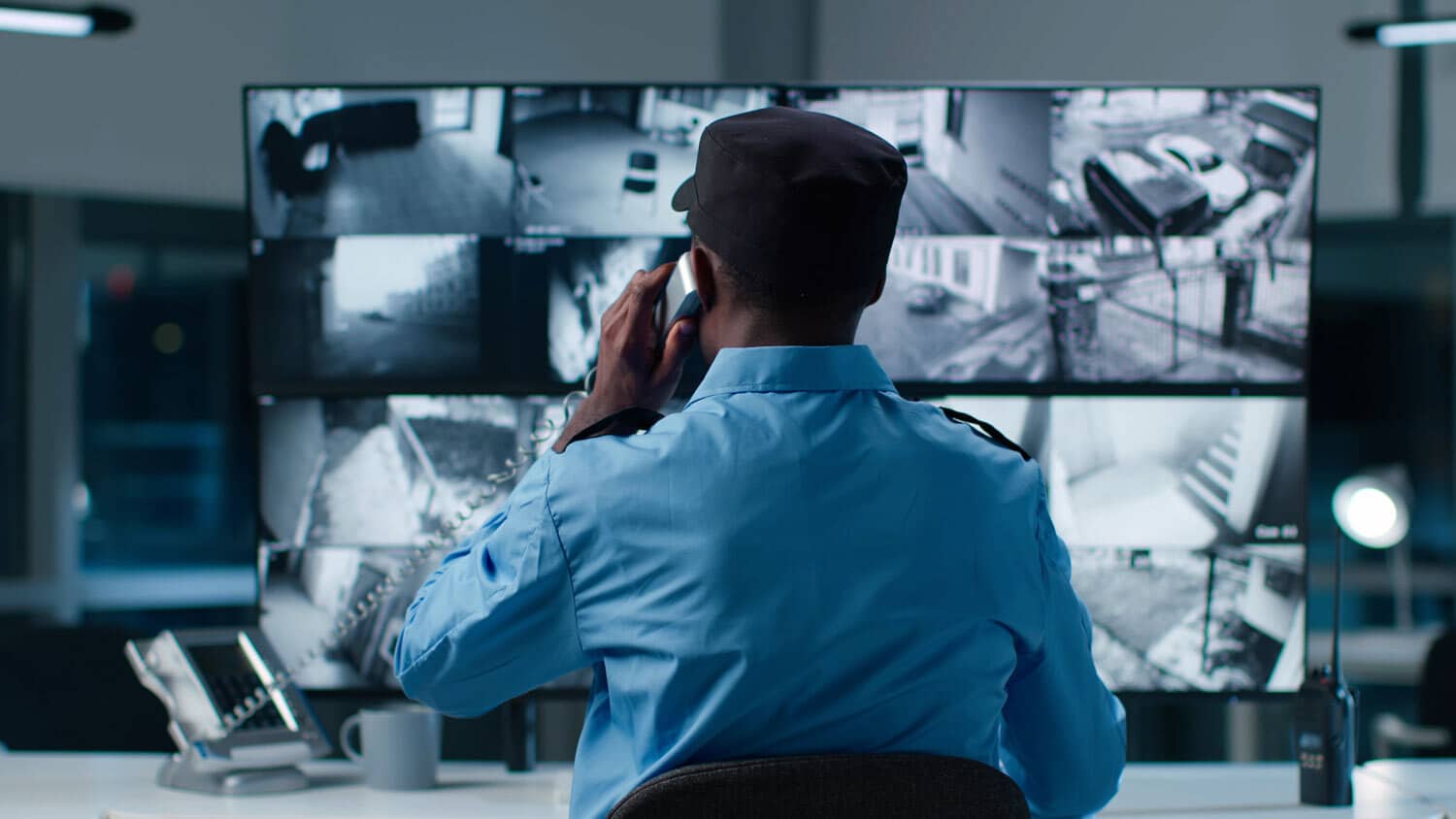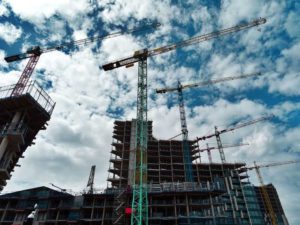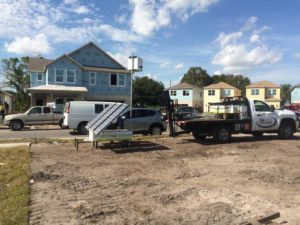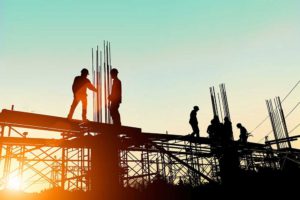Industrial sites are frequent targets for theft, vandalism, and trespassing. Construction zones, warehouses, manufacturing plants, and utility sites often operate across large, open spaces with valuable equipment and limited human supervision. That combination creates a security gap that criminals know how to exploit.
Tools disappear, copper gets stripped, and fuel tanks are drained. One security blind spot can cost your operation thousands in losses, project delays, and insurance claims.
An industrial CCTV security system can help — if it’s placed correctly. Too many businesses install cameras without a strategy, leaving critical areas exposed. If your camera placement misses key assets, entry points, or blind spots, you’re wasting your investment.
Here’s how to position your industrial CCTV security system for maximum protection.
What Is Industrial CCTV?
Before we start, a quick definition to ensure there’s no confusion. Technically, “CCTV” refers to security camera systems that can only be viewed onsite – that’s what the “closed-circuit” means. Think about a security guard viewing a bank of monitors, and that’s traditional CCTV. However, in modern parlance, “CCTV” means any surveillance camera system designed for security, whether it’s viewable remotely or not, and that’s how we’ll use it.
Cover All Entry and Exit Points
Start by securing your perimeter. Every access gate, pedestrian entrance, and vehicle checkpoint should be under video surveillance. These areas serve as the first line of defense and are the most common entry points for bad actors. Place cameras at a high vantage point to capture license plates, vehicle types, and facial features.
Make sure lighting supports clear image capture, especially during off-hours. Use infrared or low-light cameras for night visibility. Consider multi-lens or panoramic cameras to eliminate gaps for wide gates or multiple lanes.
Secure Loading Docks and Shipping Bays
Loading docks attract crime because they offer easy access to goods in transit. Cameras should cover:
-
Cameras should monitor all dock entrances to capture incoming and outgoing activity.
-
Vehicle bay doors should be under surveillance to deter theft and secure loading operations.
-
Adjacent walkways need coverage to track foot traffic around the dock area.
-
Record any blind spots near the dock to eliminate hidden vulnerabilities.
Vigilance protects against external theft and internal shrinkage. Industrial CCTV security system footage can help verify shipments and support claims during disputes.
Watch Over Equipment and Material Storage
Heavy machinery, generators and pallets of raw materials are high-value targets. Consider positioning cameras to monitor the most vulnerable locations such as:
-
Equipment staging areas
-
Fuel storage tanks
-
Tool cribs or cages
-
Any outdoor laydown yards
Consider solar-powered or mobile surveillance units if you have remote sites or unstaffed zones. These can be relocated as needed and provide full coverage even in off-grid areas.
Monitor Parking Lots and Employee Areas
Parking areas also need surveillance to deter vehicle break-ins and ensure employee safety. Place cameras at entrances and exits, and in wide-angle positions that can view the full lot.
Also, monitor timeclock stations, break areas, and locker rooms entrances — not to invade privacy, but to discourage theft and monitor for unauthorized access or loitering.
Focus on High-Risk Internal Zones
Not all threats come from outside the fence. Internal risks can be just as costly — and often harder to detect. Employees, contractors, or vendors may have access to sensitive areas vulnerable to theft or sabotage. Without surveillance, internal issues can go unnoticed until they’ve already caused serious damage.
High-risk zones include control rooms, where employees oversee critical systems and automation equipment. Any unauthorized access or tampering here can disrupt operations or compromise safety protocols. Similarly, production lines often involve high-speed machinery and valuable raw materials, making them targets for theft and workplace violations. Cameras in these areas can help document processes, verify productivity, and catch behavior that could lead to accidents or delays.
Chemical storage areas or rooms housing hazardous materials require even greater scrutiny. Mishandling these substances can create dangerous working conditions, environmental hazards, or compliance violations. Surveillance adds a layer of accountability and helps ensure that only authorized, trained personnel access these spaces.
IT server rooms are another key area to secure. These rooms often hold sensitive data and network infrastructure, making them a target for internal sabotage or data theft. Even brief unauthorized access can have significant consequences, including downtime, loss, or breaches of customer trust.
Installing industrial CCTV security systems in these internal zones strengthens your defense against insider threats and helps with compliance. In regulated industries, video documentation may be required for OSHA investigations, quality audits, or supply chain certifications. A well-placed camera system ensures you’re covered literally and legally.
Cover the Perimeter — Beyond the Fence
Criminals don’t always walk through the front gate. Place cameras along the outside perimeter, especially in blind alleys, utility easements, or wooded areas behind the site.
Thermal cameras can detect movement in complete darkness or adverse weather. Pair these with smart analytics to send real-time alerts to a remote guard or monitoring team.
Integrate with Virtual Security Guard Services
Camera placement isn’t just about recording — it’s about response. Cameras connected to a virtual security guard service allow real-time monitoring by trained personnel who can assess threats, issue audio warnings, and call law enforcement if needed.
Instead of simply capturing footage for later review, your cameras stream live video to trained offsite security professionals who actively monitor your facility in real-time.
These remote guards analyze activity as it happens. They can immediately intervene if they detect suspicious behavior — like someone lingering near a fence line or approaching restricted areas after hours. Audio talk-down systems allow them to issue live voice warnings through strategically placed speakers, often stopping a crime before it starts. Criminals are far less likely to follow through when they hear, “We’re watching you. Leave the area immediately.”
Virtual guard services can also trigger strobe lights or sirens to escalate the deterrent. If the situation escalates, guards can call law enforcement and provide real-time updates, including suspect descriptions and locations. This rapid response capability dramatically shortens the time between detection and action — something traditional security patrols can’t match.
Best of all, virtual monitoring works 24/7, including nights, weekends, and holidays. It gives your facility protection around the clock without the cost of hiring full-time, on-site guards. It’s one of the most cost-effective ways to secure your operation for sprawling or remote industrial sites.
Rely on Experts for a Custom Layout
Every industrial site is different, and cookie-cutter camera plans don’t work. Pro-Vigil’s security experts conduct site assessments to identify blind spots, high-risk zones, and asset locations. Then, we design and install an industrial CCTV security system to match your operational needs and budget.
Talk to Pro-Vigil today to get a site assessment and secure your industrial operation before the next incident happens.
Q&A
Companies should review their industrial CCTV security systems at least once a year, and more often if your site layout changes. New construction, changing work zones, or shifting equipment locations can create blind spots. Camera firmware and software should also be update regularly to patch vulnerabilities and improve performance.
Events like a theft attempt, security breach, or incident report are also good triggers for a camera or network reevaluation. Many businesses discover weak spots only after a loss. A proactive review schedule prevents that.
Look for cameras with features that match your site’s challenges. In most industrial environments, the following features are essential:
- High resolution (at least 1080p or 4K for wide areas)
- Weatherproof and vandal-resistant housing
- Night vision or infrared capability
- Motion detection or analytics for unusual activity
- Remote access via mobile or desktop
- Integration with virtual guard services
PTZ (pan-tilt-zoom) cameras offer more flexibility and coverage in remote or large areas. Mobile surveillance units provide scalable, on-demand protection for dynamic environments like construction sites.

